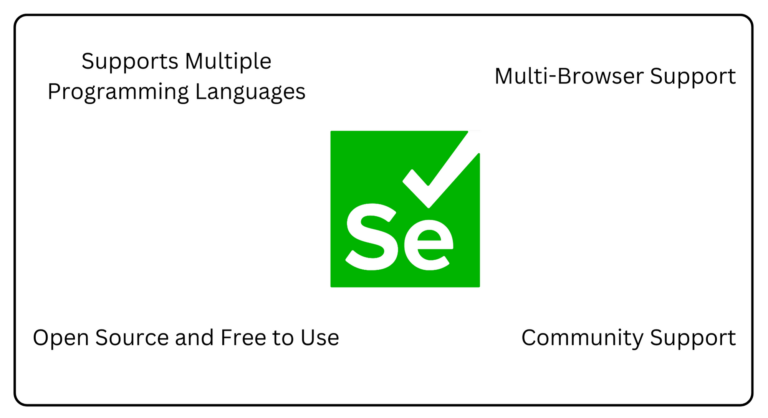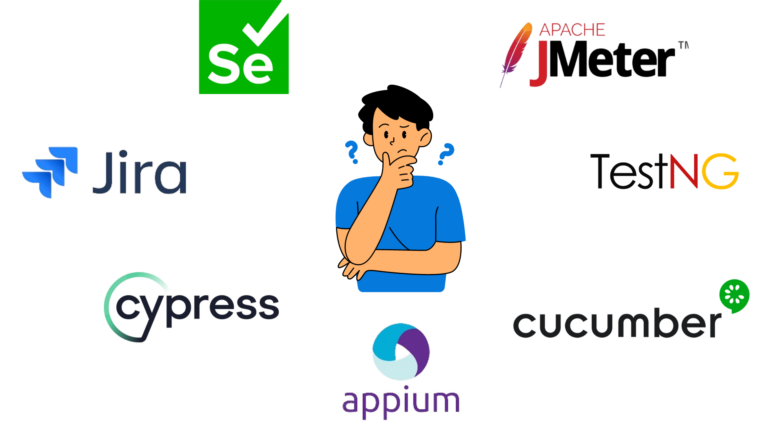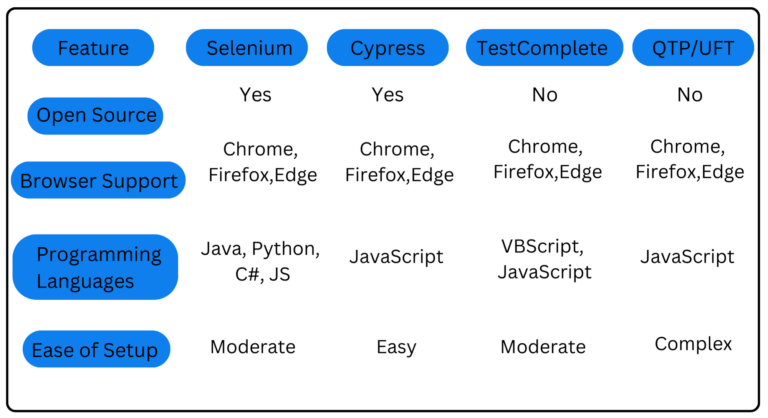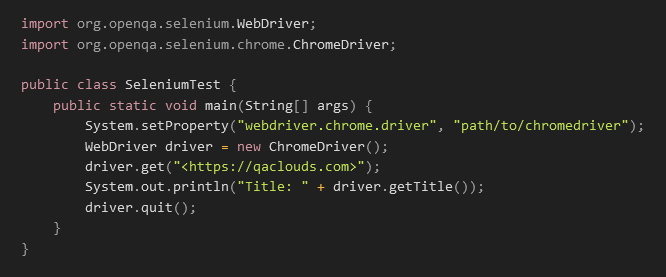Introduction
Testing is essential to ensure high-quality applications in the fast-paced software development world. Automation testing tools are becoming increasingly popular, with Selenium standing out as one of the most widely used frameworks for web testing. If you’re new to the world of test automation, this guide will help you get started with Selenium, covering its components, benefits, and how it compares to other tools.
Let’s explore why Selenium is a must-learn tool for anyone interested in Quality Assurance (QA) or web automation.

Table of Content
- What is Selenium? An Overview
- Benefits of Using Selenium for Web Automation
- Comparing Selenium with Other Automation Tools
- Getting Started with Selenium: A Step-by-Step Guide
- Conclusion
What is Selenium? An Overview

Selenium is an open-source framework used for automating web browsers. Originally developed by Jason Huggins in 2004, Selenium has evolved into a powerful suite of tools designed to automate web testing across different browsers and platforms. The best part? It’s completely free and backed by a large, supportive community.
Selenium is composed of several components, each serving a specific purpose. Let’s break down the key parts:
Selenium Web-driver: The most widely used component, WebDriver allows you to interact directly with the web browser. It supports multiple programming languages, such as Java, Python, C#, and JavaScript, making it versatile and adaptable to different projects. WebDriver interacts with the browser like a real user would—clicking buttons, filling out forms, navigating pages, etc.
Selenium Grid: The Selenium Grid tool is perfect for parallel testing, where you can run multiple tests across different browsers and operating systems at the same time. It saves time by distributing test execution, which is particularly useful for larger test suites.
Selenium IDE (Integrated Development Environment): Selenium IDE is a browser extension (available for Chrome and Firefox) that allows you to record, edit, and playback tests without writing any code. It’s ideal for beginners who want to get a feel for automation without diving into programming right away.
Benefits of Using Selenium for Web Automation

Now that you know what Selenium is, let’s explore why it’s such a popular choice for automation:
1. Open Source and Free to Use
Selenium is an open-source tool, which means it’s free to download, use, and modify. This makes it a cost-effective solution for businesses and individuals looking to adopt automation testing without a hefty price tag.
2. Multi-Browser Support
One of the standout features of Selenium is its support for multiple browsers, including Chrome, Firefox, Safari, Edge, and Opera. This cross-browser compatibility ensures that your tests work seamlessly across different platforms.
3. Supports Multiple Programming Languages
Unlike some automation tools that are limited to specific languages, Selenium allows you to write scripts in a variety of programming languages like Java, Python, C#, Ruby, and JavaScript. This flexibility makes it easier to integrate into existing development workflows.
4. Robust Community Support
Selenium has a massive and active community, which means you can find a wealth of tutorials, forums, and resources to help you troubleshoot issues and learn best practices.
5. Integration with Other Tools
Selenium can be integrated with other popular testing tools and frameworks like TestNG, JUnit, Maven, and Jenkins. This makes it a powerful choice for Continuous Integration (CI) and Continuous Delivery (CD) pipelines.
Comparing Selenium with Other Automation Tools

While Selenium is one of the most popular tools for web automation, it’s not the only one available. Here’s how Selenium compares with other leading tools like Cypress, TestComplete, and QTP/UFT:

Key Takeaways:
Selenium vs. Cypress: Cypress is more developer-friendly, with real-time reloading and debugging features. However, it primarily supports JavaScript and is limited in terms of browser support compared to Selenium.
Selenium vs. TestComplete: TestComplete is a powerful, feature-rich tool, but it’s not open-source and requires a paid license. It is ideal for enterprise environments where a high budget is available.
Selenium vs. QTP/UFT: While QTP/UFT is a robust tool with advanced features, it’s limited to VBScript and requires a significant investment, making it less accessible for smaller teams.
Getting Started with Selenium: A Step-by-Step Guide
If you’re ready to start your Selenium journey, follow these steps to set up a simple test:
Step 1: Install Java and Eclipse IDE
Download and install Java Development Kit (JDK).
Download Eclipse IDE to write and run your test scripts.
Step 2: Download Selenium WebDriver
Visit the Selenium Downloads page and download the WebDriver for your browser.
Step 3: Create a New Project in Eclipse
Open Eclipse and create a new Java project.
Add Selenium WebDriver libraries to your project.
Step 4: Write a Simple Selenium Test
Here’s a simple test to open a browser and navigate to a website:

Step 5: Run Your Test
Run the script in Eclipse and watch as Selenium opens a browser, navigates to your website, and retrieves the page title.
Conclusion
Selenium is an essential tool for anyone interested in automation testing, offering flexibility, powerful features, and a supportive community. Whether you’re just getting started with QA or looking to enhance your automation skills, mastering Selenium can significantly boost your career.
With its ability to integrate seamlessly into CI/CD pipelines, support multiple languages, and handle cross-browser testing, Selenium remains a leading choice in the world of web automation. So why wait? Start your Selenium journey today and unlock the potential of automated testing!
For more insights into testing best practices, please browse through our General Articles.















